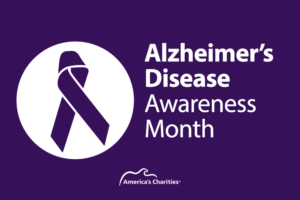Sarah Ford | July 2, 2015
U.S. Giving Roaring Back For Some Sectors More Than Others
By Ryan Scott, Founder & CEO of Causecast
Giving USA recently released its report on philanthropy for 2014 and the news is encouraging; giving has increased five years in a row.
According to the report, published by Giving USA Foundation and researched and written by the Indiana University Lilly Family School of Philanthropy, Americans donated an estimated $358 billion to charity in 2014, surpassing the pre-recession peak of $355 billion. That’s 7.1 percent higher than 2013, and a nice rebound from the dark days of the recession in 2009, when giving dropped 15 percent to $303 billion.
But pardon my having to repeat the same lamentation I had at last year’s report. Why is corporate giving still so underwhelming?
Every year, this report looks at four sources of giving: individuals, foundations, bequests and corporations. As usual, individual giving led the charge by far, comprising 72 percent of total giving.
Here’s a full breakdown of the numbers:
- Individual giving;258.5 billion, representing 5.7% increase over 2013
- Bequest giving (8% of total):28 billion, 15.5% increase over 2013
- Foundation giving (15% of total):54 billion, 8.2% higher than in 2013
- Corporate giving (5% of total):17.8 billion, 13.7% more than in 2013
Individuals are making big donations earlier in life, a pattern the report characterizes as “stunning.” Unsurprisingly, many of these gifts come from the high-tech world. Bill and Melinda Gates donated $1.9 billion to their foundation. Sean Parker donated $550 million to his foundation and his donor-advised fund at Fidelity. Jan Koum gave $556 million to the Silicon Valley Community Foundation.
The report summarized several trends:
- Most gifts of1 million or more went to foundations or colleges
- Gifts from tech entrepreneurs have skyrocketed, but donors from the financial world are giving less
- Tech entrepreneurs gave nearly half of the total donated by the top 50
- 50 percent of the gifts from tech donors came from those age 50 or younger
“The 2014 growth among eight out of nine types of charitable organizations is good news for the philanthropic sector as a whole,” said W. Keith Curtis, chair of the Foundation and president of nonprofit consulting firm The Curtis Group. “The growth can be attributed, in part, to the ways charities have been working smarter during daunting times. Nonprofits increasingly are making sure they have strong cases for support, communicate frequently with donors and provide proof of the impact charitable gifts make.”
And now for the cranky portion of this missive. Personally, I think there’s room for philanthropic companies to be more philanthropic. A lot more room.
The good news is that while companies are still the laggards when it comes to giving back, this year’s performance is an improvement from the year before, when corporate giving actually declined. Corporate giving last year grew by 12 percent, to $17.8 billion, but represented 0.7 percent of profits.
Perhaps companies should take a page from Philanthrocapitalism, the must-read book by Matthew Bishop and Michael Green. The authors make the case that the best way to ensure the success of philanthropy is to change the way we judge donors, from a “simplistic focus on how much they give” to a “rankings based on what philanthropists actually achieve with their giving.” I think the same criteria same should apply to corporate donors.
>> Learn about America’s Charities’ New Partnership With Causecast

Get Resources and Insights Straight To Your Inbox
Explore More Articles
Open Position: Customer Service Coordinator (Remote-Part Time)
Position Title: Customer Service Coordinator (Remote – Part Time) Department: Charitable Funds Management Solutions We are a non-profit charitable organization looking for skilled individuals who…
Read ArticleGet Resources and Insights Straight To Your Inbox
Receive our monthly/bi-monthly newsletter filled with information about causes, nonprofit impact, and topics important for corporate social responsibility and employee engagement professionals, including disaster response, workplace giving, matching gifts, employee assistance funds, volunteering, scholarship award program management, grantmaking, and other philanthropic initiatives.




